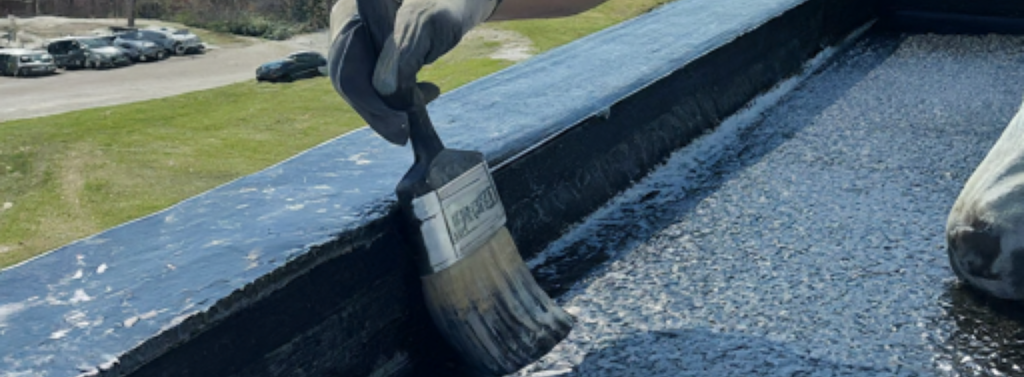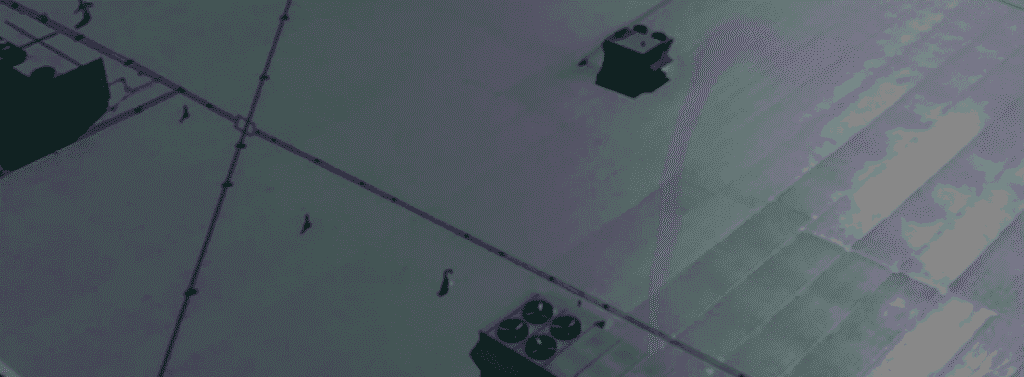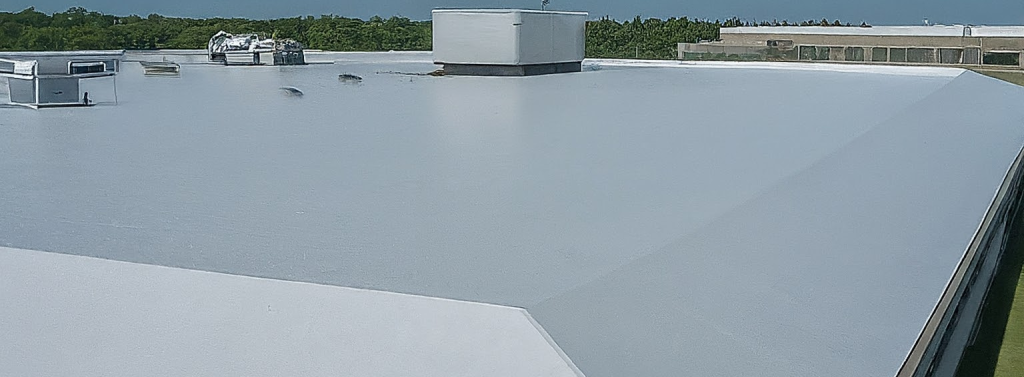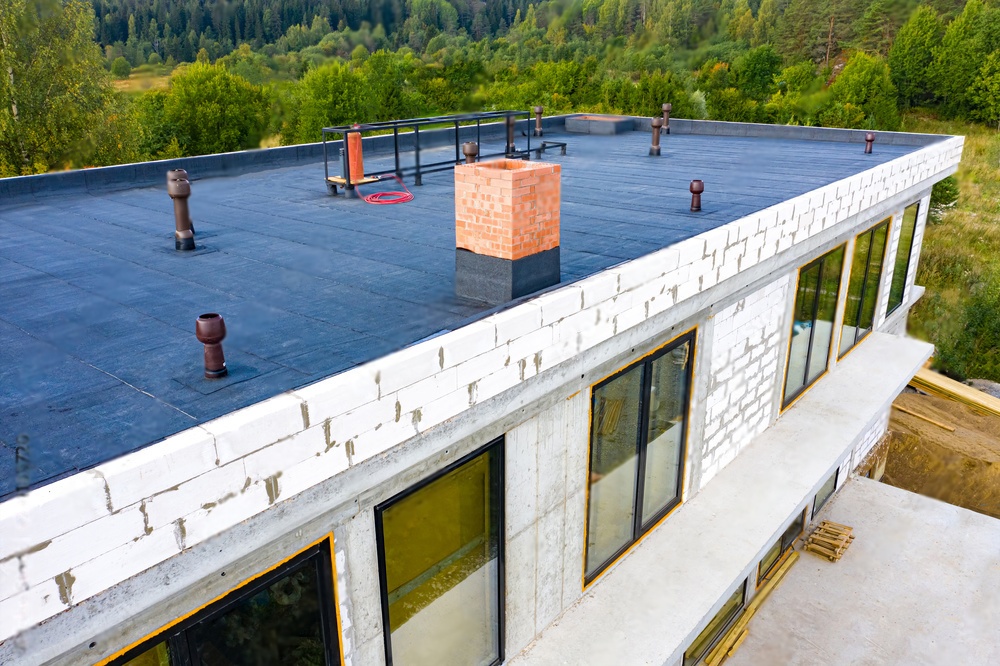Choosing the best waterproofing solution for your roof is essential for protecting your home or building from water damage, mold, and structural issues. With various waterproofing methods available, each offering unique benefits, it’s crucial to understand which option suits your needs. This guide will help you decide which waterproofing method is best for your roof.
Liquid Waterproofing Membrane: Versatile and Easy Application

Benefits:
- Seamless and flexible coating
- Easy application with a brush, roller, or spray
- Ideal for complex roof shapes
Best For:
- Roofs with intricate designs
- High foot traffic areas requiring flexibility
Bituminous Membrane Waterproofing
Benefits:
- Durable against harsh weather conditions
- Easy installation over large areas
- Excellent UV protection
Best For:
- Flat or low-slope roofs
- Commercial and industrial buildings
Polyurethane Waterproofing
Benefits:
- Highly elastic and seamless coating
- Strong adhesion to various substrates
- Resistant to weathering and chemicals
Best For:
- Complex roof shapes
- Chemical resistance required
EPDM Rubber Roofing

Benefits:
- Long lifespan (20-30 years)
- UV and ozone resistance
- Flexibility for temperature variations
Best For:
- Flat roofs in residential and commercial buildings
- Extreme weather conditions
TPO Roofing Membrane

Benefits:
- Reflective surface reduces cooling costs
- Resistant to punctures and tears
- Environmentally friendly and recyclable
Best For:
- Commercial buildings seeking energy efficiency
- Warm climates needing heat reflection
PVC Membrane Roofing
Benefits:
- Lightweight and easy to install
- Excellent chemical resistance and fire retardance
- Welded seams ensure watertight protection
Best For:
- Commercial and industrial roofs
- Roofs needing strong fire resistance
How to Apply Roof Waterproofing
Step 1: Prepare the Roof Surface
Description: Proper surface preparation is crucial for effective waterproofing.
Instructions:
- Clean the Roof: Remove debris, dirt, and old roofing materials.
- Repair Damages: Fix any cracks, holes, or damaged areas.
- Ensure Dryness: Make sure the roof surface is completely dry before applying waterproofing materials.
Step 2: Apply Waterproofing Material
For Liquid Waterproofing Membrane
- Mix the Liquid: Stir the liquid membrane thoroughly.
- Apply First Coat: Use a brush, roller, or sprayer to apply the first coat evenly.
- Cure Time: Allow the first coat to cure as per manufacturer’s instructions.
- Apply Second Coat: Apply a second coat for added protection.
For Bituminous Coating
- Heat the Bitumen (if required): Some bituminous coatings need heating.
- Apply Coating: Use a brush or roller to apply the bitumen evenly.
- Dry Time: Allow the coating to dry and cure.
For EPDM Rubber Roofing
- Unroll the Membrane: Lay the EPDM membrane over the roof surface.
- Adhere the Membrane: Use adhesive to secure the membrane to the roof.
- Seal the Seams: Use seam tape or adhesive to seal the seams and edges.
For TPO and PVC Roofing Membranes
- Unroll the Membrane: Lay the TPO or PVC membrane over the roof.
- Adhere the Membrane: Use mechanical fasteners or adhesive to secure the membrane.
- Heat Weld the Seams: Use a heat welding tool to seal the seams.
Step 3: Inspect and Maintain
Description: Regular inspection and maintenance ensure the longevity of the waterproofing.
Instructions:
- Inspect Regularly: Check the roof for any signs of damage or wear.
- Repair as Needed: Address any issues immediately to prevent further damage.
- Clean the Roof: Keep the roof clean to prevent debris buildup.
Final Thoughts
When choosing the best waterproofing method for your roof, consider factors like roof type, local climate, building use, and budget. Liquid waterproofing membranes and polyurethane coatings are ideal for complex roofs, while bituminous and EPDM membranes offer robust protection for larger areas. TPO membranes are perfect for energy efficiency, and cementitious and PVC membranes provide specific structural and environmental benefits. Assess your needs to select the most suitable waterproofing solution, ensuring a long-lasting, leak-free roof.
Feel free to explore our waterproofing services and visit our blog where we have informative content about the world of building and construction!
Contact Us
Call Us: 443 551 0006
Website: www.usabuildersanddevelopers.com
Address: 2144 Priest Bridge Court, Suite 8, Crofton, MD 21114, USA

